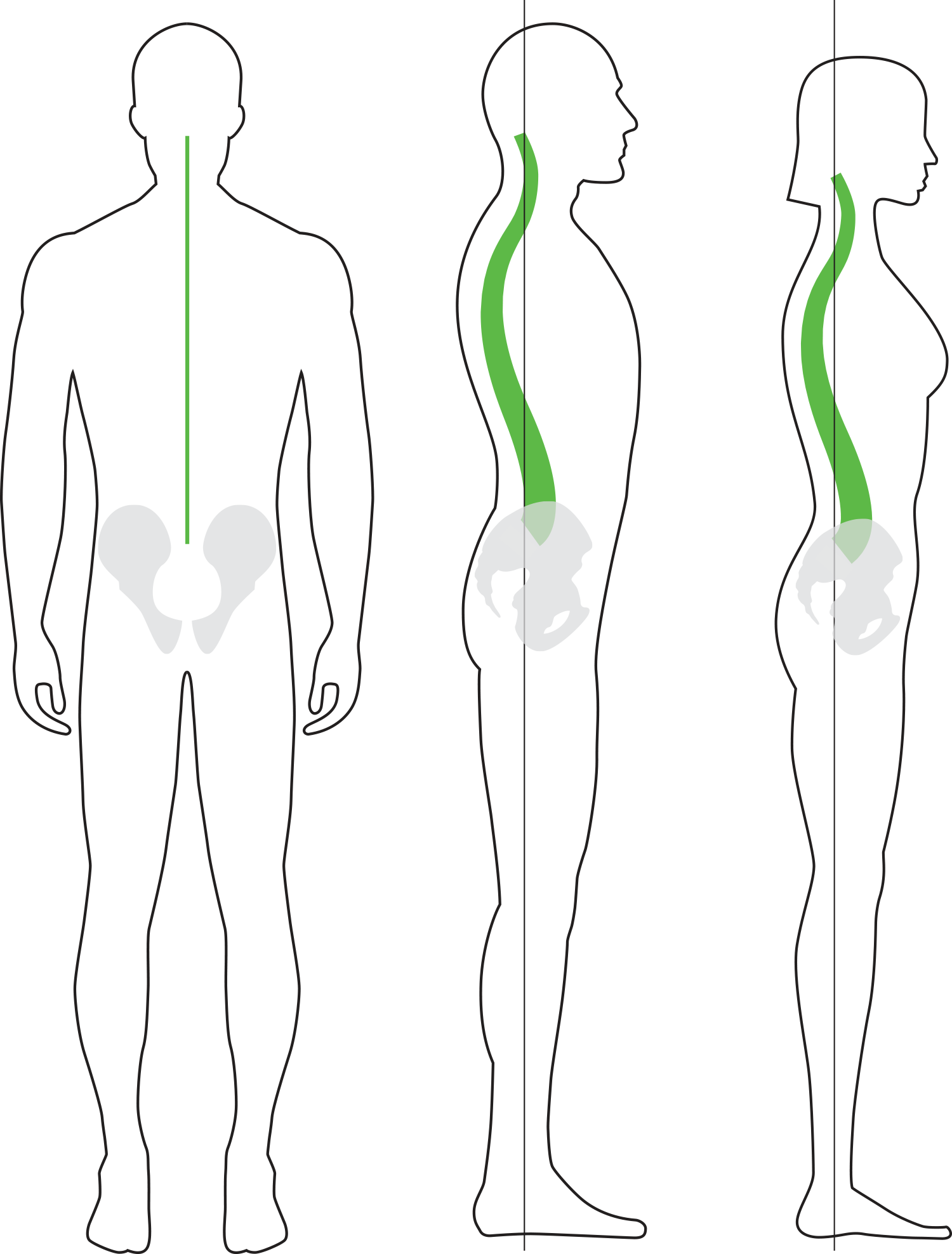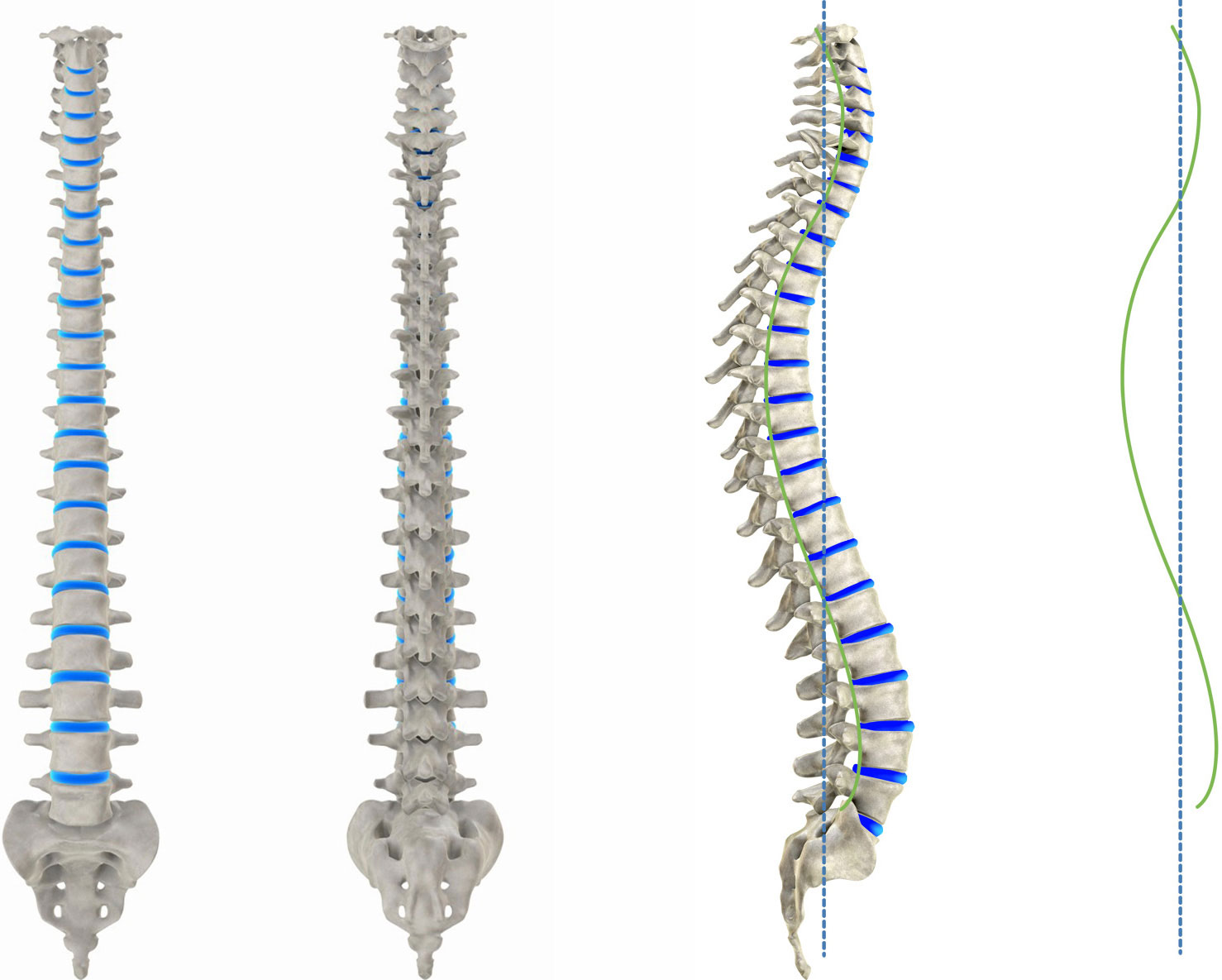THE IDEAL SPINE
Although it is rare to meet someone with a perfectly aligned spine, we nevertheless base our care on an ideal spinal model as established by the founder of Chiropractic BioPhysics® (CBP), Dr. Donald Harrison, D.C., MSE, PhD and his colleagues. Based on several studies conducted on healthy subjects, this model represented in the illustrations that follow depicts a perfect posture and spinal alignment, which are conducive to optimal neuro-spinal health.

The ideal posture seen from the side and back and various possible combinations of postural deviation by segment (head, shoulders, base of the chest, pelvis) in relation to the feet.

The ideal spinal column seen from the right, front and back. Seen from the front (and back), the spine should be perfectly straight; seen from the side, it should present three harmonious curves: the cervical lordosis (curve toward the front of the neck), the thoracic or dorsal kyphosis (curve toward the rear of the chest) and the lumbar lordosis (curve in lower back).


